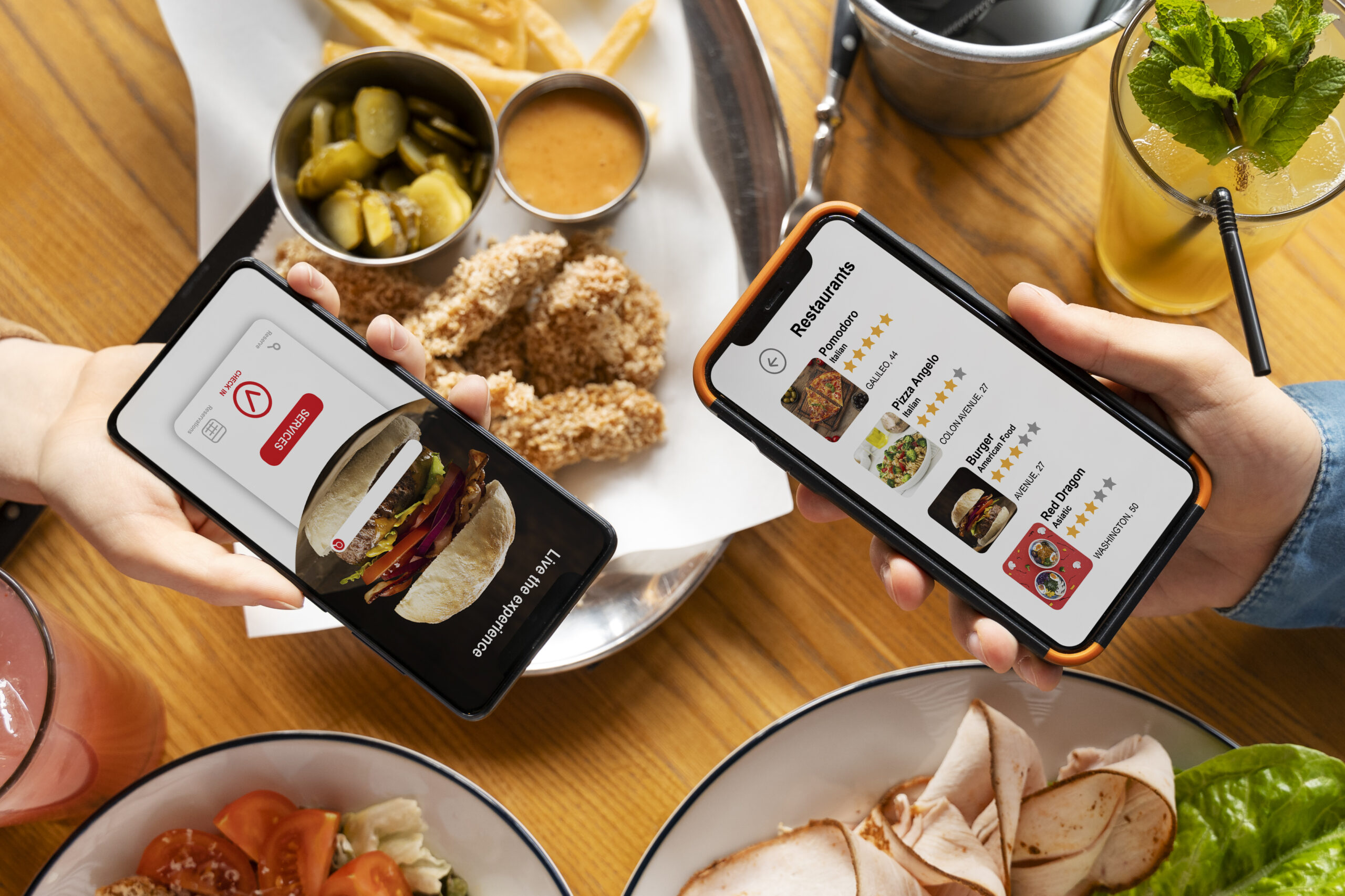What are these Food Delivery Apps giving you?
Food delivery applications are the icons that drop you to our dream food land. You can get everything quickly. These applications deliver Chole Bhature, Paav Baji and all you can imagine in no time. These applications need your selection of an item, and you can eat your desired dish. The payment mode is simple and one click away. The user experience of these applications is so simple that you will get food by exploring in no time.
How do Delivery Apps fool you?
There is not one way they fool you; this trap starts as soon as you reach the interface of the application. Now, I will list the web of these applications:
1. Colour Schema of these applications
The application’s colour scheme makes use of vibrant and appealing colours. You will see these apps in orange, yellow or red colours. According to Psychology, these colours increase hunger and make food seem more tempting. Users may eat harmful meals they may not have otherwise chosen as a result of this colour decision. This traps you in impulsive ordering. Apps combine these colours with a simple design to produce an appealing user experience. This encourages frequent and careless eating choices at the price of health. It may be simpler to defend frequent ordering without considering nutrition due to this visual stimulus. It prioritises flavour and convenience over freshness, quality, or health advantages.
2. 10-minutes of Packet food delivery
These applications promote packaged, prepared products that put speed ahead of freshness. They promise delivery in as little as ten minutes. The nutritional content of reheated dishes is zero. This is a quick service where food is not fresh and uses a lot of preservatives.
This fast-food culture encourages consumers to choose convenience over well-balanced meals. They have replaced balanced meals at home by normalising quick and simple meals. It gives the appearance of efficiency while ignoring the possible long-term health hazards. The food contains minimal dietary fibre, artificial additives, and excessive salt levels. These meals compromise quality for speed. They are in favour of nutritious, carefully prepared food, which frequently results in unhealthy eating habits and health hazards.
3. 8-minutes snack delivery
They push users towards fast satisfaction with the promise of 8-minute food delivery. The food is less nutrient-dense and processed. These foods are often heavy in sugar, salt, and bad fats. They meet hunger right away but don’t provide any long-term nourishment.

This arrangement plays on appetites, making it simple to satiate them while paying little attention to one’s health. Such snacks’ frequent availability encourages unhealthy snacking behaviours and habits. It raises the risk of obesity and associated health problems by promoting the consumption of foods high in calories and low in nutrients. They drag users away from healthier, whole-food selections. These apps focus on speed and convenience.
4. Lots of coupons and discounts
Coupons and discounts entice customers to place more frequent orders. They create the appearance of savings while promoting wasteful spending and overindulgence. Regular sales of unhealthy products might lead to a dependence on inexpensive, high-calorie items. This eliminates healthier options. These incentives encourage consumers to eat more meals or snacks than they could. It boosts caloric consumption without taking into account the potential health risks.
These strategies influence consumer behaviour, making it simpler to place impulsive orders. The tactic undermines consumers’ long-term health by successfully promoting an unhealthy food culture. It paralyses users to make wise financial decisions.
5. Tie-ups with Credit Cards
They encourage users to place frequent orders through partnerships with credit card issuers. They give rewards or cash-back incentives to add even more allure. These offers have the potential to push customers into a vicious cycle of overordering. The users view meal delivery as a reward or even an inexpensive luxury. Although it may appear a valuable financial deal but, it promotes repeated ordering.

This forces cost savings ahead of nutritional content. Frequent indulgence runs the danger of increasing reliance on packaged foods. The speedy delivery services results in health issues due to high-sugar foods. The easy payment plan, is disguised as a financial benefit. It encourages unhealthy eating habits.
Health risks associated with Food delivery through applications
Food delivery applications deliver your food as early as possible. Some places listed in these applications operate in unhygienic places. Most of the outlets offer low-quality food. Their homemade food is the tag they use to attract customers. It is a marketing gimmick. The instant reach to food has not only made us weak mentally but also made us fragile.
The trend of eating food made in restaurants has increased so much that now people have ignored the need to make it themselves. This 10 MINUTE DELIVERY fulfilled the craving of the people, making them obese.
GenZ and their cool trends leading them to unhealthy choices
The unhealthy choices are most of the time made by the cool generation GenZ. They love to carry forward trends of eating outside and late at night. The trends of carrying sugary drinks, having the culture of posting out the lavish lifestyle of eating in all the restaurants. According to Business Insider India (Swiggy report) GenZ Contributes to 40% of food consumption. There are multiple studies which depict the exploitation of health by GenZ. GenZ is the generation of people which believes in the idealogy of Extremes.
Either they are not consuming food to be slim and slender in the category of malnourished or eating too much to become Obese.
How to Beat Delivery App Tricks for Better Health?
This article highlights how delivery apps use psychological strategies to promote the consumption of unhealthy foods. They are jeopardising long-term health. With eye-catching designs and rapid snack deliveries, these platforms often prioritise ease over nutrition. They are encouraging users to opt for high-calorie, low-nutrient meals. Promotions like coupons and discounts further encourage impulsive ordering. They are creating a cycle of reliance on quick unbalanced choices. This often unhealthy food choices that disrupt dietary balance.

Nevertheless, you can take proactive steps to counteract these tactics. By making conscious decisions of preparing meals at home and break this trap. Choose healthier options when ordering, and avoid purchases driven by discounts. You can reclaim control over your eating habits and focus on your well-being. This article encourages readers to overcome these marketing strategies. Hence, we urge you to prioritise your health over convenience!
